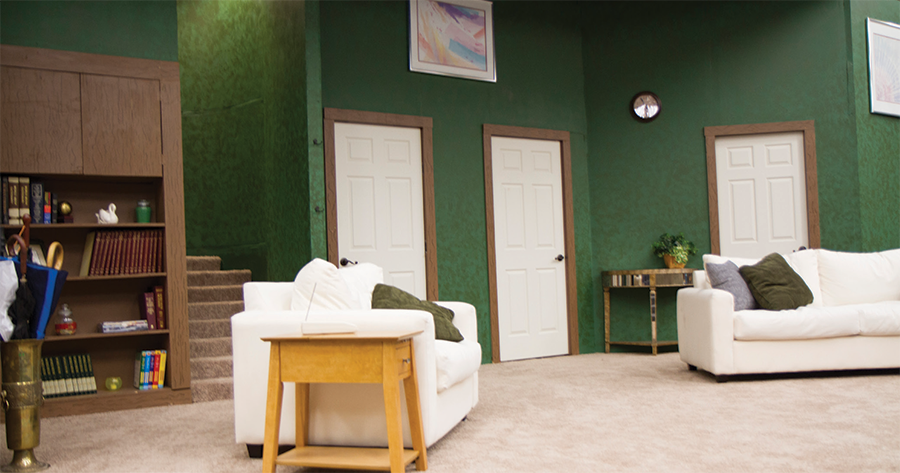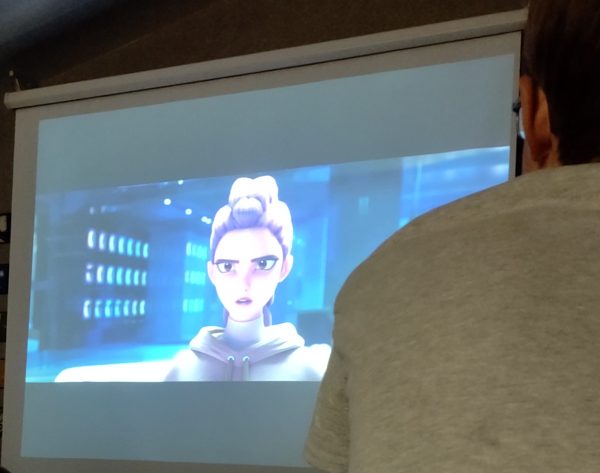Lack of funding increases tension to various programs
February 20, 2016
Taylorsville High School has many programs and clubs that allow students to be themselves and show off, like debate, art club, and creative writing . Sometimes though some of these programs can barely pull through due to the lack of money provided by the school and how much money they are able to raise themselves.
Nowhere is this more relevant than in the drama department. Every year the drama department puts on several shows, all of them self supported.
“We spend what we need, and we cross our fingers that we make it back in ticket sales,” said Mr. Garner, the theatre teacher and arts director at the school.
The department spreads out the money for fabric (costumes), wood (sets), publicity (banners and posters), and paint and tools.
Sometimes when the money cannot be made, they reuse costumes, repaint old sets, they use whatever they can to produce a show. The school, while giving them full support, does not provide any money for the shows to be performed. With even just a small loan from either the school or the district, say maybe $2,000, the department could buy about 380 yards of fabric, 564 blocks of wood, or 18 cans of paint.
Yet the school allots a set amount of money to the athletics department. Sure, school sports bring a big crowd and offer kids scholarships and opportunities to express themselves, but so do the arts.
It’s not entirely one-sided though. Certain sports, regardless of having school funding, struggle to stay afloat. When asked about the process that goes into deciding where the money goes, coach Barnes, head coach of the volleyball team, said,” […] We just have to go through a process of looking at what our budget is and from our budget we try to figure out our needs and our wants, what we have to have, what we’d like to have, and then we go out and try to raise money to try and get it.”
Looking at the cost of an average year of football it can get around to $15,000 (estimate given by coach Mackay) and the average cost of putting on a musical is $6-8,000 (estimate given by Garner), most of that money (in the drama department’s case all of the money) comes from fundraising and participation fees.
Even then, with set budgets and fundraising, some sports and shows fall a little short and are forced to sacrifice things like new equipment and costumes.
“We get a small amount, not a large amount, but a small amount that could maybe take care of a set of uniforms here or there, for at least my sport of volleyball, but it’s not a lot. […] We stretch it out as much as we can.” said coach Barnes.
The problem doesn’t just start and end with money though, the effects that both departments have on the student body is directly tied to students’ passions.. During football season, regardless of whether they get played or not, football players work out every day and practice different plays to get stronger, faster, better in time for the next game.
The same applies to performing arts kids who build their own sets, sew their own costumes, practice choreography for hours, memorize lines, paint sets, and deal with their own hair and makeup. Add on top of all of those students a couple hours of homework, part-time jobs, and the need for sleep and now you have a ticking time bomb of talent and stress.
Sarah Salamah, a player on the girls’ basketball team, said on average she pays about $450 or more a season just to play. Over the summer, the girls’ basketball team delivered phone books to try and raise money. In past years they asked businesses to donate money, in return they let them put an ad in the program that they hand out at games. On top of that, Salamah also invests 10 hours a week practicing for games and playing.
Even though not having enough funding can set a sport or a show back, the reward of being able to express an idea or play a game is “priceless”. Salamah said, “[…] I honestly don’t mind the time and the money, because in the end it’s all worth it.[Because] It’s what I love to do.”





